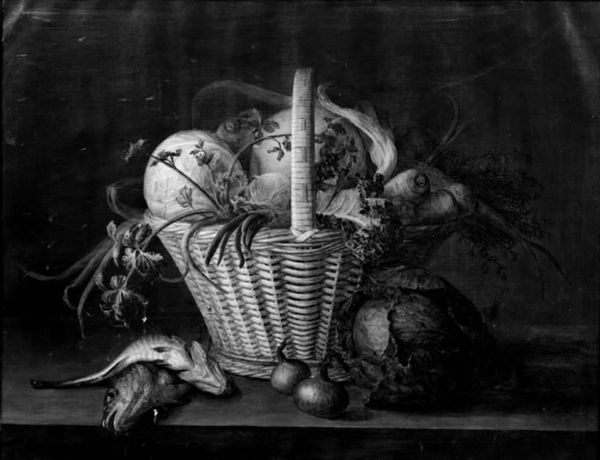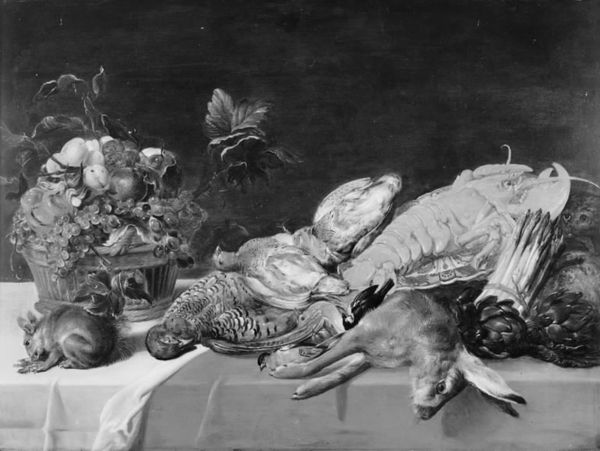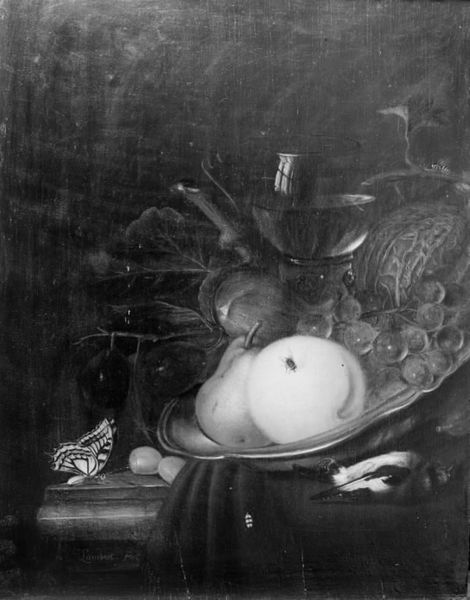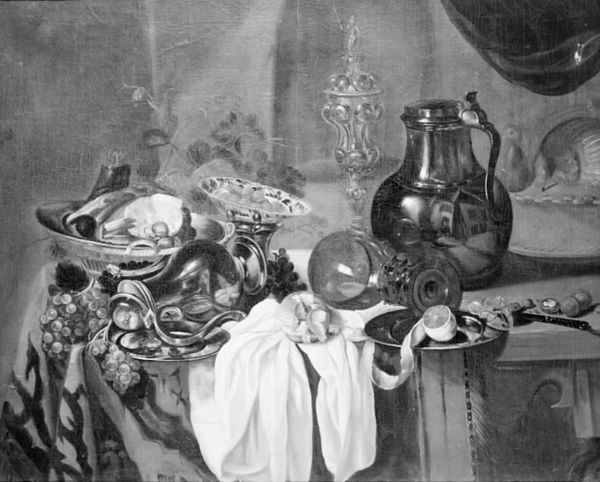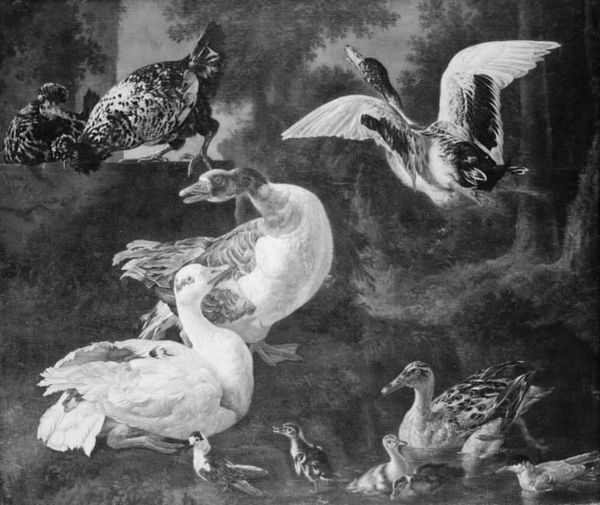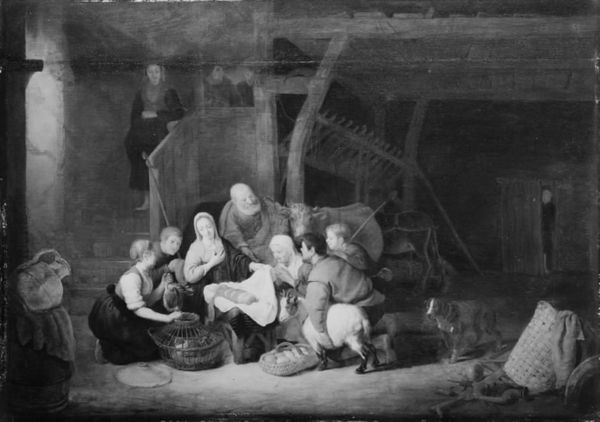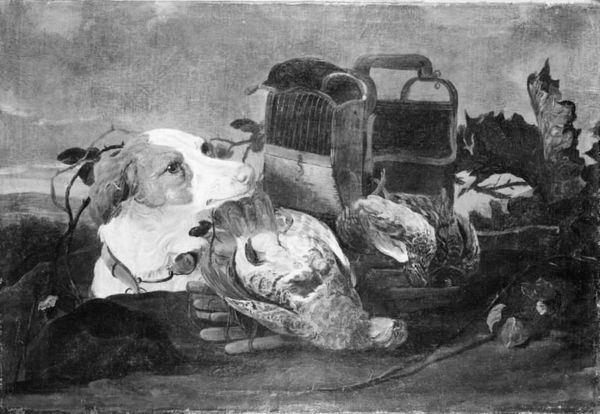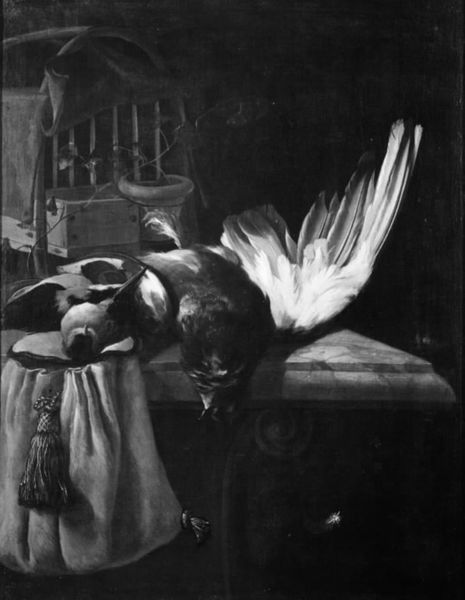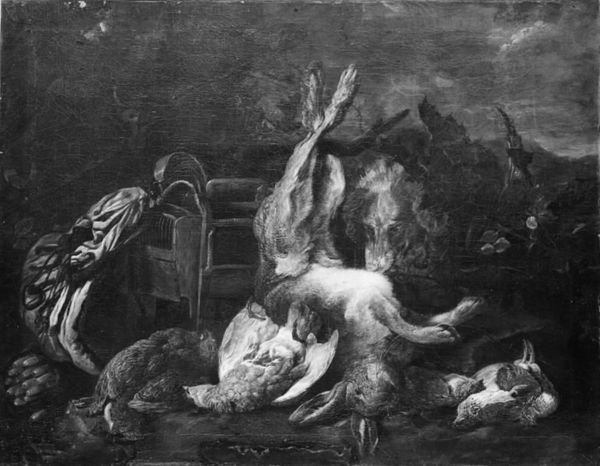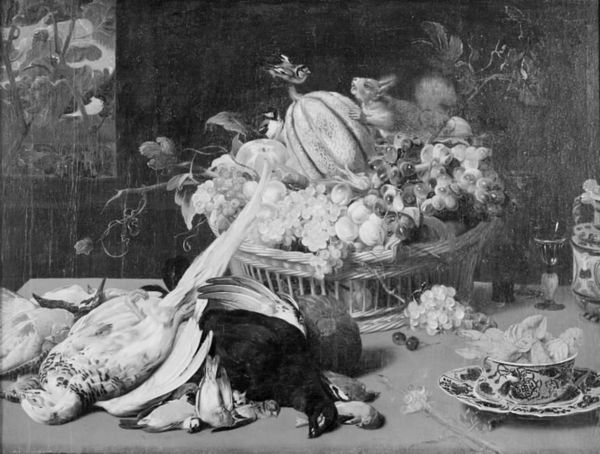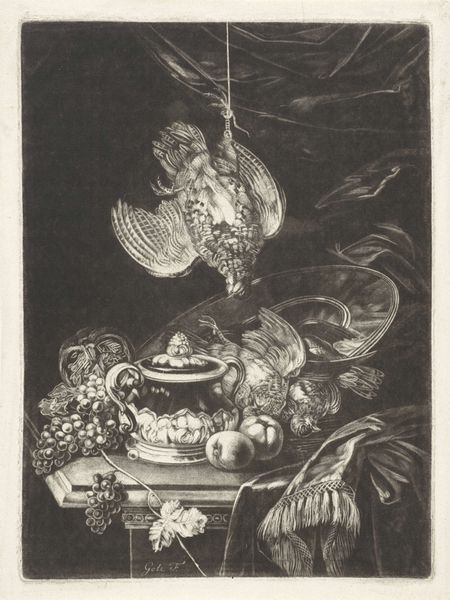
painting, canvas
#
baroque
#
painting
#
sculpture
#
canvas
#
black and white
#
genre-painting
#
monochrome
#
realism
#
monochrome
Dimensions: 91 cm (height) x 119 cm (width) (Netto)
Editor: Here we have "Still Life with Fruit and Game" by Joannes Fijt, created sometime between 1626 and 1661. It’s rendered in monochrome on canvas. The overall composition strikes me as rather unsettling, almost violent in its depiction of hunted animals. What sociopolitical context informed its creation? Curator: That's a astute response. We must look beyond the aesthetic appreciation of realism and confront the symbolism. Consider the period – the Dutch Golden Age – marked by colonial expansion and immense wealth accumulation. Still lifes, particularly those featuring game, weren't simply about celebrating bounty. What do you make of the juxtaposition of lifeless animals and vibrant fruits? Editor: I guess I never considered the implications of that contrast before. The dead animals imply death, and, well, subjugation…and the fruit – abundance? It almost feels…exploitative? Curator: Precisely. The slaughtered animals, rendered with meticulous detail, speak volumes about power dynamics, gender roles and ecological exploitation. This wealth relied on unequal structures of trade, and of the social hierarchies both back home and overseas, where people and resources were ruthlessly harvested. The inclusion of game, displayed as trophies, reflects an aristocratic worldview trickling down to the merchant class. Editor: So, it’s not just a pretty picture; it's loaded with historical baggage? Curator: Indeed. Look closer: consider the textures, the light and shadow… What message do you think these stylistic elements add to the narrative? Does it reinforce or subvert the established hierarchies? Editor: It seems… almost deliberately opulent, even in monochrome. Maybe it subtly glorifies that hierarchy, reinforcing the idea of dominance through artistry itself. Curator: Excellent insight! Reflecting on how aesthetic choices perpetuate or question existing power structures becomes important in understanding art’s active role in history and ongoing socio-political conversations. Editor: I never considered the work in those terms. Thanks; that was… insightful.
Comments
No comments
Be the first to comment and join the conversation on the ultimate creative platform.
